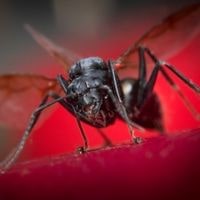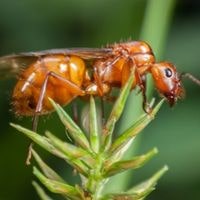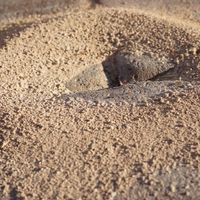Flying Ants In Pool
Flying ants in pool. This article will learn all about the most common types of ants that you may find in and around your swimming pool.
You will also discover why ants are attracted to your swimming water and how they might be damaging it.
We’ll also share five easy ways that you can prevent ants from entering your pool while also getting rid of them naturally.
Flying Ants In Pool

Ants love water just like humans do. And they are also attracted to sunlight.
These flying ants need lots of water, but it is usually more practical for them to appropriate any available moisture than to go on a long search for a good source.
Which would not be suited for their species of ant anyway (animals tend to stick to what they know and serve an environmental purpose).
Here are some of major reasons behind flying ants in the pool:
1. Heavy Rains
Heavy rains can flood a swimming pool with ants. You must be wondering how because you might think it would be hard for them to swim?
As heavy rains flood your yard and garden, destroying ant nests, the water flows, carrying some of these ants into the pool! The most common type of ant you are likely to have flow in during a heavy downpour is fire ants.
Fire ants mainly nest outdoors, so they aren’t as protected as other types of ant nests and therefore vulnerable to destruction during bad weather conditions like heavy rains.
2. Summer Heat
Like all creatures, ants need water to survive. During the peak of summer months and because of the excessively dry weather, your pool attracts ants that walk around on its edges trying to get to the water, which causes many of them to fall in.
We recommend using a reliable pool and elimination company such as 1st Choice Pool Services San Diego that uses advanced techniques that deal with these pesky ants and make your waters a safe, natural environment for you and your family.
3. Salty Pool Water
If you don’t maintain your pool correctly, the water quickly gets dirty. That’s because of high TDS levels (Total Dissolved Solids) in the water. This means all the minerals and others are dissolved in your pool water.
In a poorly maintained pool, the TDS level rises from metal, metal ions, organic matter, and salts because they’re not being removed.
And one of the most tangible signs of this is foul taste/odor and environmental effects such as discoloration and certain smells (such as an ant problem!) High TDS can also put a big dent in your pocket.
4. Ant Mating Season
Ants are attracted to your swimming pool for many reasons. You see, flying ants (or alates) are part of why flying ants seek out water because you have many types of plants, including flowers in and around your pool.
The other reason is light – many of them can be seen buzzing about in search of a mate. At night or even during daylight hours, you might notice small white flies which will eventually turn their bodies orange as they mature near a pond.
Upon further inspection, you might see that these whiteflies have wings and legs like ants! However, unlike the typical anthill with a massive super-colony or community (one big happy family!), these lonely ants exist as individual colonies!
When the time is right, and conditions are acceptable, some of them will fly off searching for new opportunities – perhaps a nesting ground on another plant nearby with food and suitable needs.
5. Buggy Yard Or Garden

That’s one of the main reasons you’re probably finding ants and bugs in your swimming pool – not just because of the water but because of them!
They want to get into your pool, perhaps sunbathe close by or cool off. On a hot summer day, who wouldn’t?
Also, if there is any brush very close to the perimeter of your property, then it makes it easy for those pesky tiny insects to crawl up and hide inside your swimming pool.
Is there a reason why ants form clusters in pools?
Ants can drown in water, but they can live for days before dying. Ants form clusters in water to help maintain their structural integrity and create a life raft that allows them to reach the shore.
Many ants who die during floods or strong windstorms become waterlogged (stay wet longer than necessary) since the water can’t drain through the ant’s body, and currents quickly sweep them away.
Whether you’re swimming alone or with someone else, it’s never a good idea to jump into any body of water if there are clumps of dead ants floating on top – because those could be more than just dead ants.
Some might have been killed by stinging nettles and remain ready to do their job in response to stimuli from a creature that disturbs their resting place.
Ways of Getting Rid Ants In A Pool
- Take care of the entire yard to eradicate ants living around your pool.
- Pest Control For Swimming Pool Pumps, Filters, And Plumbing.
- Reduce the salinity of the pool water to prevent ants from entering.
- Remove the ants from the pool deck.
- Don’t let flying ants in your pool.
Conclusion
Flying ants in pool. As if dealing with an infestation of ants in the pool wasn’t bad enough, it seems these pesky ants have formed colonies around your pool. No worries, though; we’re here to help! Here you’ll find why your pool is drawing in this unique breed of ants and how to get rid of them. Not only are there thousands upon thousands of different species of insect that calls water home.
But there are also a wide variety of dangerous little critters like the one-celled protozoa (pathogenic bacteria), or bacteria that cause illness can lurk in pools waiting to harm bathers who let their guard down. So always make sure to check out our guide on keeping harmful bacteria at bay while enjoying your pool this summer.
Related Guides



